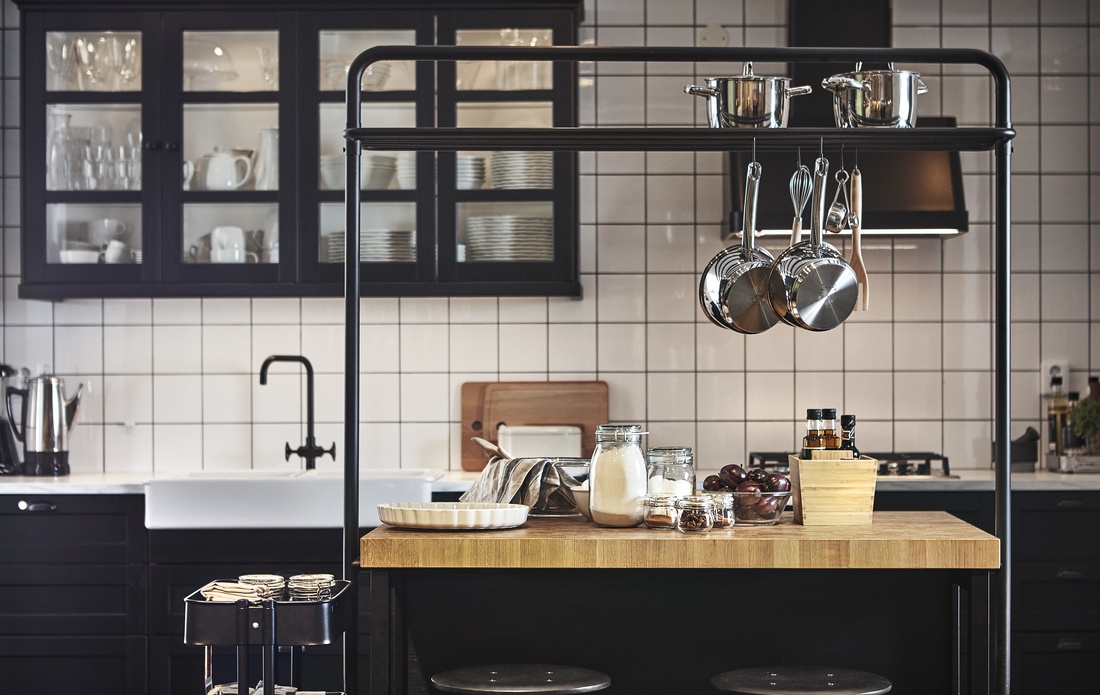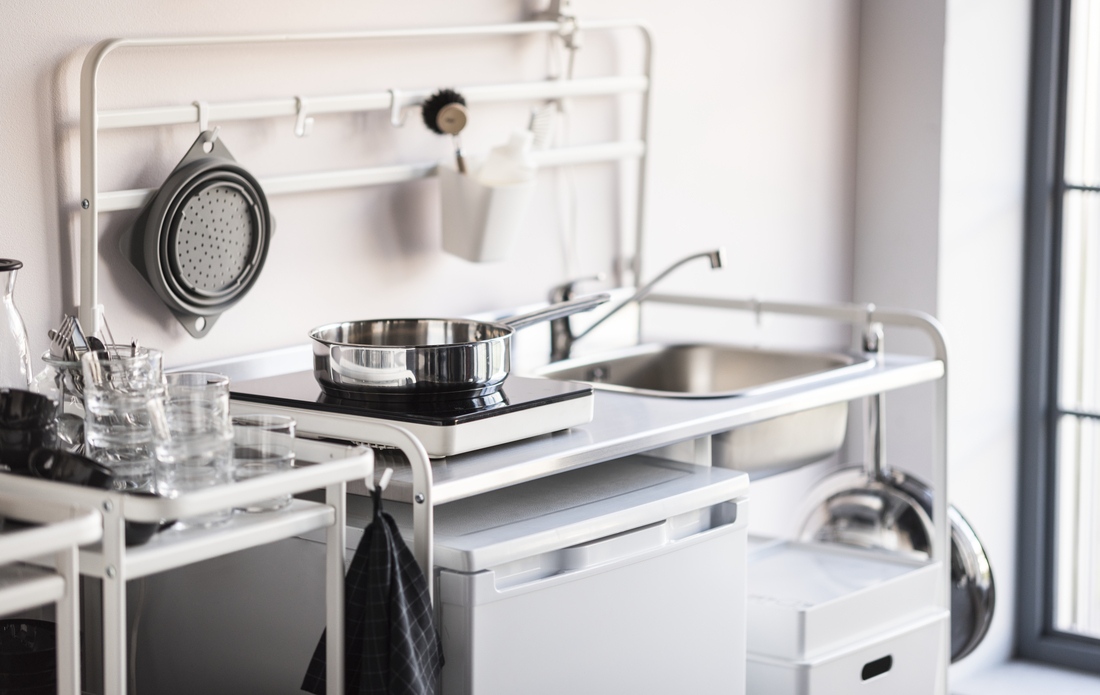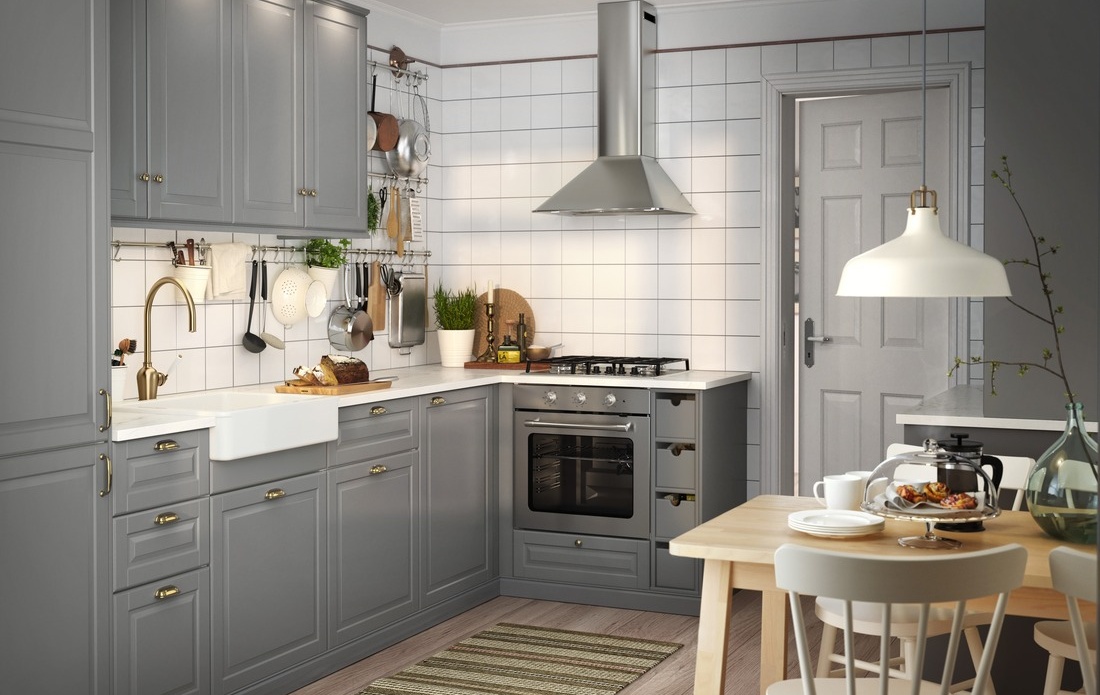The difference between a dirty kitchen and a clean kitchen in modern homes



In today’s homes, families typically have two kitchens: a dirty kitchen and a clean kitchen. While both serve the same general purpose of cooking, each has its role and distinct characteristics.
This kitchen separation aims to maintain cleanliness, comfort, and spatial aesthetics.
In this article, let’s explore the differences between dirty and clean kitchens, how to design them for function and style, and find inspiration for arranging these spaces!
Also read: Minimalist and aesthetic open kitchen design behind the house
The kitchen is the heart of where food is prepared. For those who love to cook, this area becomes a source of joy in serving delicious meals to loved ones.
Over time, the kitchen concept has evolved to suit its users’ lifestyles.
In the past, a house usually had just one kitchen, a central area for all cooking activities like chopping, frying, and washing dishes.
However, in modern home design, the kitchen is no longer seen as merely a functional area, but also as part of the home’s visual appeal.
This gave rise to the division of the kitchen into two main areas: the dirty kitchen and the clean kitchen.
The term “dirty kitchen” stems from its function, handling heavy-duty cooking tasks such as sautéing, boiling, or roasting in large quantities.
This area often gets messy with oil splatters and food residue, which is why it's usually placed at the back of the house and kept out of sight.
In contrast, the clean kitchen is meant for lighter tasks, especially those related to serving food.
As a result, clean kitchens are often located near the dining area or integrated with the family room.
The existence of two kitchen types is not just a trend but a response to lifestyle changes.
Cooking is a basic household need, but nowadays it’s also a source of joy. It’s where dishes that delight everyone are made.
Many homeowners, however, want their spaces to remain clean and visually pleasant, free from mess or lingering food smells.
That’s why separating dirty and clean kitchens has become an ideal solution. The dirty kitchen handles the "real cooking," while the clean kitchen maintains a tidy and welcoming appearance, especially when guests are over.
While one kitchen may seem sufficient, having two kitchens with distinct functions can help keep the rest of the home clean and odor-free.
Let’s break down the key functions of each kitchen area!
Once all ingredients are prepped, it’s time to hear the sizzle of hot oil and smell the tempting aroma of food!
Take all your ingredients to the dirty kitchen. This is where you can freely wash vegetables, cut proteins, sauté dishes, or make a delicious salad dressing!
Cooking activities here are intensive, often producing smoke, strong odors, and food spills around the area.
That’s why this space is typically equipped with ventilation systems and a range hood for air circulation.
The kitchenware in a dirty kitchen is usually made of heat-resistant and easy-to-clean materials, like ceramic or stainless steel.
It’s no surprise that dirty kitchens are often enclosed or tucked away from the home’s main areas.
Besides keeping the air fresh, this layout also helps minimize noise and odors that could disturb other residents.
The clean kitchen supports lighter, quicker cooking activities. Here, you can plate already-cooked dishes, prepare drinks, or serve snacks.
Some families also use this area as a pantry or a place to store tableware. Dry ingredients for daily use are usually kept on shelves or in cabinets within the clean kitchen.
Although both kitchens support cooking activities, they serve different purposes.
Their differences can be seen from various angles, including location, type of equipment, and interior material choices.
Understanding these distinctions helps you design a kitchen that suits your needs and daily lifestyle.
One of the most noticeable differences is their placement within the home. Typically, dirty kitchens are located at the back of the house, near the exit.
This placement helps ensure that airflow from the dirty kitchen doesn’t affect comfort in the main living areas.
On the other hand, clean kitchens are usually located in open and accessible spaces, like near the dining table or family room.
This makes it easier for residents to serve food without having to walk far from where everyone gathers.
Thanks to this smooth workflow, the kitchen becomes a pleasant, efficient, and functional area.
Their differing functions also influence the types of equipment commonly used. In the dirty kitchen, you’ll typically find large stoves or ovens as essentials.
Since it handles primary cooking processes, all equipment here needs to be heat-resistant, durable, and easy to clean.
To maximize storage, use cabinets that can store cookware like pans and also serve as bases for quality stoves, such as IKEA’s base cabinets.
Meanwhile, the clean kitchen is more likely to be equipped with smaller appliances like a microwave, toaster, water dispenser, and mini fridge.
Its purpose is not for cooking but to assist in food presentation and consumption. Cabinets and countertops in this area are designed to match these simpler, more aesthetic tools.
Due to the differences in usage, the materials chosen for dirty and clean kitchens should not be the same. Cooking tools in the dirty kitchen must be waterproof, heat-resistant, and easy to clean.
That’s why materials like wall tiles, stainless steel, or natural stone are commonly used for countertops and backsplashes. Dirty kitchen designs usually don’t match the rest of the home’s interior, as they’re often hidden.
In contrast, you’re free to be more expressive with the clean kitchen’s design, as it’s used more lightly. Finishes like wood laminate, polished granite, and soft color palettes work well here.
This way, the clean kitchen becomes a visually pleasing extension of the rest of your interior.
You might be wondering how to create this separation effectively.
Building both a clean and dirty kitchen doesn’t have to be expensive or complicated. With the right plan, you can create two fully functional kitchen areas.
The first step is understanding your workflow when preparing food. Observe closely how you move from one task to another.
This includes storing ingredients, washing them, cooking, and finally plating or serving meals.
Ideally, the dirty kitchen should be located out of direct view from the family room and have proper ventilation to ensure good airflow.
Meanwhile, the clean kitchen should be placed closer to the dining or family area for easy serving and food access.
By identifying each kitchen’s primary role, you can design an efficient layout without needing major renovations.
Worried about your budget? That won’t be an issue if you choose smart storage solutions.
Space-saving modular kitchen products from IKEA are a practical choice to keep your kitchen organized and efficient.
Use multifunctional cabinets, wall-mounted spice racks, or movable trolleys for added flexibility.
With smart arrangements, both kitchens can look stylish without breaking the bank.
Also read: Choosing the right kitchen cabinet size: a practical guide for efficiency and comfort
Having a clean and stylish kitchen is everyone’s dream. You can achieve this by dividing your kitchen into a dirty kitchen and a clean kitchen.
Despite the name “dirty kitchen,” don’t forget to clean it regularly, especially after cooking.
To keep things stylish, decorate your clean kitchen to match the rest of your interior design.
For functionality, add complete IKEA kitchen cabinets made from durable, high-quality, and budget-friendly materials.
Let your dirty and clean kitchens become a joyful space for food creations and happy moments with IKEA’s kitchen products!
Author:
Ayu Nindyakirana (Web & Digital Content Specialist)
Please enter the verification code sent to your WhatsApp
Did not receive OTP?
Resend code in seconds